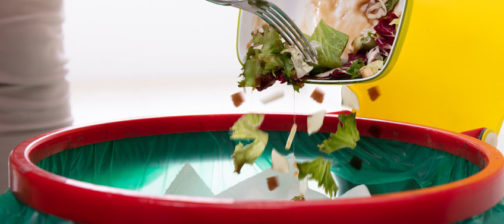Written By Julie Paiva, CHHC
As consumers, we rely on labels to make good nutritional choices for our families. However, let’s not forget that food manufacturers use labels to promote and sell their products. Unfortunately, we are not living in a world where “the whole truth and nothing but the truth” is printed on food packaging. Food companies use marketing tricks to make their products seem more appealing to consumers. Labels can be misleading, especially if you don’t learn to read between the lines and examine the fine print.
Knowing what words on the label really mean can aid you towards making the healthiest choices when shopping. Below are some of the words that marketers use to grab buyer’s attention. Familiarize yourself with these, so you can see the truth beyond the advertising.
Pure
Who doesn’t want to eat food that is “pure?” It makes you think that the item is clean and straight from nature without being altered. We certainly wouldn’t want to put anything contaminated in our bodies. The word “pure” has no regulated, agreed-upon meaning in food labeling. Also, it tells you nothing about what’s in the package that perhaps should not be there. If you want “pure” food then don’t eat anything that has been processed.
Natural
“Natural” is probably the least trustworthy of all the label words used. The FDA has no definition of the word natural on food labeling. The only restriction on its use is when products contain artificial colors, synthetic substances, or flavors. Although “natural” makes us think that the product is close to its natural state it says very little about the nutritional quality of food, or even its safety. For example, high-fructose corn syrup can be labeled as natural because it is derived from corn starch.
Made From
This phrase simply means the food you are purchasing started with this product. For example, the claim “made from 100% fruit” may be technically correct, but it’s misleading. Consumers may think that they are consuming 100% fruit. They read that and imagine fields. What the label really means is the product was created with 100% fruit but along the way may have diluted it, added chemicals and additives, or altered it in some other way. What started out as something good for you may have been turned into something not so good for you. If you want 100% fruit, eat some fresh fruit.
Made With
“Made With” can be very misleading. “Made with real fruit” is similar to “made from”. The law does not require the label to specify how much fruit. You often find this claim on children’s snacks. They may say “made with” fruit but may only contain a single grape in the snack.
Fat-Free
The FDA allows food to be labeled fat-free if it contains less than 0.5 grams of total fat per serving. Remember that good quality fat is healthy for your body.
Enriched
This is often a tip-off that something good was taken out of the food. Enriched flour and enriched white bread are not nourishing, so they add things that the body may benefit from.
Smoked
This label may make you think that the item has been slow-roasted on a backyard BBQ or in a smokehouse. Legally, this term describes the flavor of the food, not how it was made. Most likely, the food has been artificially or chemically smoked and/or could just contain smoked flavoring.
Organic
This label can be the most confusing. The USDA regulates the use of the certified organic label. More and more items are popping up in stores these days with the organic label. What does this organic label mean? Foods that are labeled as 100% certified organic are foods and ingredients that were grown without chemical fertilizers and pesticides, in soil free of these substances. Be careful because not all “organic” labels are equal:
- USDA Certified 100% Organic: This means that the product contains 100% USDA certified organic ingredients, has zero non-organic ingredients in it, and any processing aids used during product production were 100% USDA certified organic.
- USDA Organic: means that the product labeled contains at least 95% organic ingredients.
- “Made with organic ingredients.” According to the USDA, a product with this label must contain at least 70% organic ingredients but watch out for that other 30% because they often do not tell you where they come from.
The best thing to do when looking at products in the grocery store aisles is to flip to the list of ingredients. Remember that it is the goal of the food company to sell as much as they can of each item that they produce. Your goal is to make sure that you and your family eat the healthiest foods available. Be smart and cautious when you shop!





Love the articles! I always leave with a golden nugget if good info.
Thanks so much for sharing